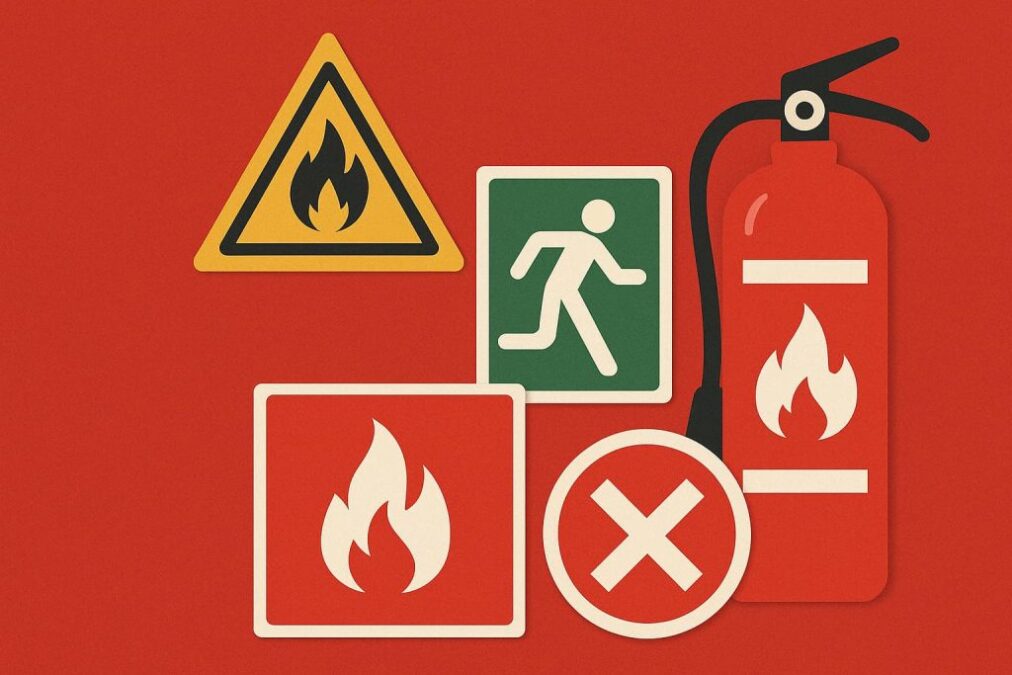Navigating fire safety regulations for a business in Surrey can feel complex, but understanding your obligations is crucial for protecting your staff, premises, and reputation. Following the law isn’t just about compliance; it’s about creating a safe environment and ensuring business continuity. This comprehensive guide covers the essentials of Surrey fire risk assessment, focusing on the legal requirements and best practices for businesses across Surrey.
The Legal Foundation: The Regulatory Reform (Fire Safety) Order 2005
In England and Wales, the primary legislation governing fire safety in non-domestic premises is the Regulatory Reform (Fire Safety) Order 2005 (FSO). This order places the responsibility for fire safety squarely on the shoulders of the “Responsible Person”. This is typically the employer, owner, landlord, or anyone else with control over the premises.
Under the FSO, the Responsible Person must:
- Carry out a comprehensive fire risk assessment.
- Identify and implement appropriate fire safety measures.
- Provide staff with fire safety instruction and training.
- Maintain a clear plan for emergency situations.
Failure to comply with these regulations can result in severe penalties, including hefty fines and even imprisonment. In Surrey, the Surrey Fire and Rescue Service is the enforcing authority for the FSO and has the power to inspect premises and issue notices for non-compliance.
The Cornerstone of Compliance: Your Fire Risk Assessment
A fire risk assessment is the single most important document for your business’s fire safety strategy. It is a systematic and organised look at your premises to identify fire hazards and the people at risk. If you employ five or more people, or if your premises are subject to a licence, you are legally required to have a written record of your findings.
The process is generally broken down into five key steps:
Step 1: Identify Fire Hazards
This involves a thorough examination of your premises to find potential sources of fire. Think about:
- Ignition Sources: Anything that can start a fire, such as faulty electrical equipment, heating systems, naked flames, or smoking materials.
- Fuel Sources: Anything that can burn easily, including paper, cardboard, wood, plastics, and flammable liquids.
- Oxygen Sources: While air is the most common, be mindful of other sources, particularly in industrial settings.
Step 2: Identify People at Risk
Consider everyone who uses the premises. This includes employees, visitors, contractors, and members of the public. Pay special attention to individuals who may be particularly vulnerable, such as those with disabilities, lone workers, or children.
Step 3: Evaluate, Reduce, or Remove Risks
Once hazards and risks have been identified, you must take action to mitigate them. This could mean:
- Moving flammable materials away from heat sources.
- Installing fire-resistant doors and walls to slow the spread of fire.
- Ensuring electrical equipment is regularly tested and maintained.
- Installing a suitable fire detection and alarm system.
Step 4: Record, Plan, and Train
This step is about documenting your findings and creating a clear plan of action. You must record all significant findings and put together an emergency plan. All staff must be made aware of this plan and receive appropriate training. Regular fire drills are essential to ensure everyone knows what to do in an emergency.
Step 5: Review and Update
Fire safety is not a one-off task. Your fire risk assessment must be reviewed regularly and whenever there are any significant changes to your business, such as new construction, changes in occupancy, or the introduction of new processes. A general recommendation is to review it at least once a year.
Essential Fire Safety Measures for Businesses in Surrey
In addition to the risk assessment, your business must have the correct equipment and procedures in place to comply with regulations and ensure the safety of all occupants.
Fire Detection and Alarms
A suitable fire detection and warning system is a legal requirement for most premises. The system must be able to alert all occupants to a fire and should be tested regularly. Weekly alarm tests and a professional service at least every six months are recommended by British Standards.
Escape Routes and Emergency Lighting
Escape routes must be kept clear at all times and lead to a place of safety. Fire exit signs and emergency lighting are crucial for ensuring people can find their way out safely, even in a power cut or smoke-filled environment. All escape doors must be easily and immediately openable from the inside.
Fire Extinguishers and Equipment
The FSO requires you to provide “appropriate fire-fighting equipment.” This usually means portable fire extinguishers. The type and number of extinguishers required will depend on the findings of your fire risk assessment. It’s vital that staff are trained on how to use them correctly and that all equipment is maintained and serviced annually.
Fire Safety Signs
Clear and correctly placed fire safety signage is a legal necessity. This includes:
- Fire exit signs
- Fire extinguisher ID signs
- Fire action notices (explaining what to do in case of a fire)
- Warning and prohibition signs (e.g., “Highly Flammable” or “No Smoking”)
Training and Drills
All employees must receive adequate fire safety training. This includes fire awareness, the location of escape routes and equipment, and what to do if the fire alarm sounds. It is also good practice to appoint and train fire wardens or marshals who can assist with evacuation and check that procedures are being followed.
The Benefits of a Proactive Approach
Beyond legal compliance, a proactive approach to fire safety offers numerous benefits:
- Protection of Life: This is the most important factor. A robust fire safety plan saves lives.
- Business Continuity: Fires can devastate a business. By being prepared, you can minimise damage and get back to business faster.
- Insurance and Liability: Many insurers require proof of fire safety compliance. A well-maintained fire safety plan can reduce your insurance premiums and limit your liability in the event of a fire.
- Reputation: Demonstrating a commitment to safety builds trust with employees, customers, and the wider community.
By diligently following the guidance of the Regulatory Reform (Fire Safety) Order 2005 and adhering to best practices, businesses in Surrey can not only meet their legal obligations but also foster a culture of safety that protects their people and their future.
You may also read:Benefits of Luxury Vinyl Flooring


